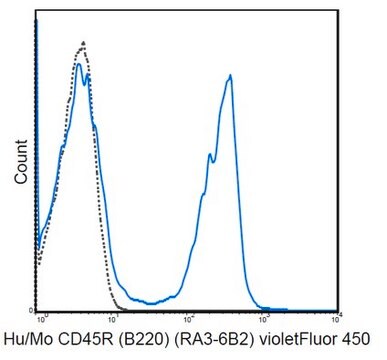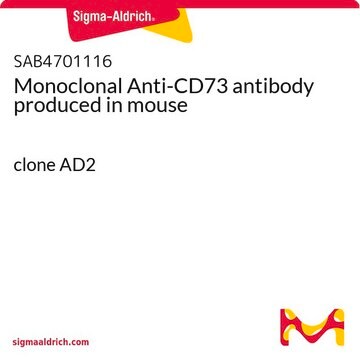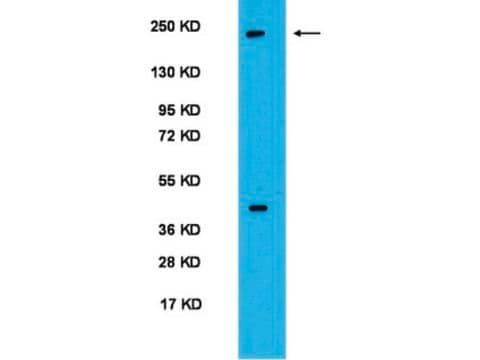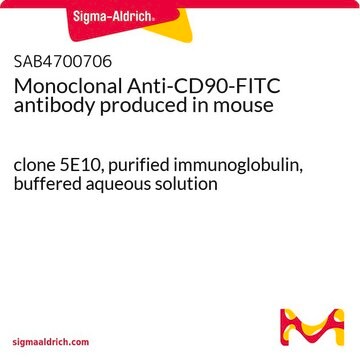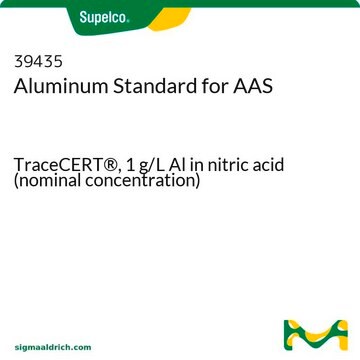MABT117
Anti-Endoglin (CD105) Antibody, clone 44G4
clone 44G4, from mouse
Synonyme(s) :
Endoglin, CD104
About This Item
Produits recommandés
Source biologique
mouse
Niveau de qualité
Forme d'anticorps
purified immunoglobulin
Type de produit anticorps
primary antibodies
Clone
44G4, monoclonal
Espèces réactives
human
Technique(s)
flow cytometry: suitable
immunohistochemistry: suitable
immunoprecipitation (IP): suitable
Isotype
IgG1κ
Numéro d'accès NCBI
Numéro d'accès UniProt
Conditions d'expédition
wet ice
Modification post-traductionnelle de la cible
unmodified
Informations sur le gène
human ... ENG(2022)
Description générale
Immunogène
Application
Immunoprecipitation Analysis: A representative lot was used by an independent laboratory to IP Endoglin from HOON, NALM-6, 3104, 3161, HL-60, U-937, EM-3 and KG-1a cells (Gougos, A., and Letarte, M. (1988). J Immunol. 141(6):1925-1933).
Cell Structure
Adhesion (CAMs)
Qualité
Flow Cytometry Analysis: A 1:200 dilution of this antibody detected Endoglin in HUVEC cells.
Description de la cible
Forme physique
Stockage et stabilité
Remarque sur l'analyse
HUVEC cells
Clause de non-responsabilité
Not finding the right product?
Try our Outil de sélection de produits.
Code de la classe de stockage
12 - Non Combustible Liquids
Classe de danger pour l'eau (WGK)
WGK 1
Point d'éclair (°F)
Not applicable
Point d'éclair (°C)
Not applicable
Certificats d'analyse (COA)
Recherchez un Certificats d'analyse (COA) en saisissant le numéro de lot du produit. Les numéros de lot figurent sur l'étiquette du produit après les mots "Lot" ou "Batch".
Déjà en possession de ce produit ?
Retrouvez la documentation relative aux produits que vous avez récemment achetés dans la Bibliothèque de documents.
Articles
PLTMax® Human Platelet Lysate (hPL) is a superior serum-free and xeno-free media supplement alternative to fetal bovine serum (FBS) for human mesenchymal stem cell (MSC) cultures.
Notre équipe de scientifiques dispose d'une expérience dans tous les secteurs de la recherche, notamment en sciences de la vie, science des matériaux, synthèse chimique, chromatographie, analyse et dans de nombreux autres domaines..
Contacter notre Service technique

